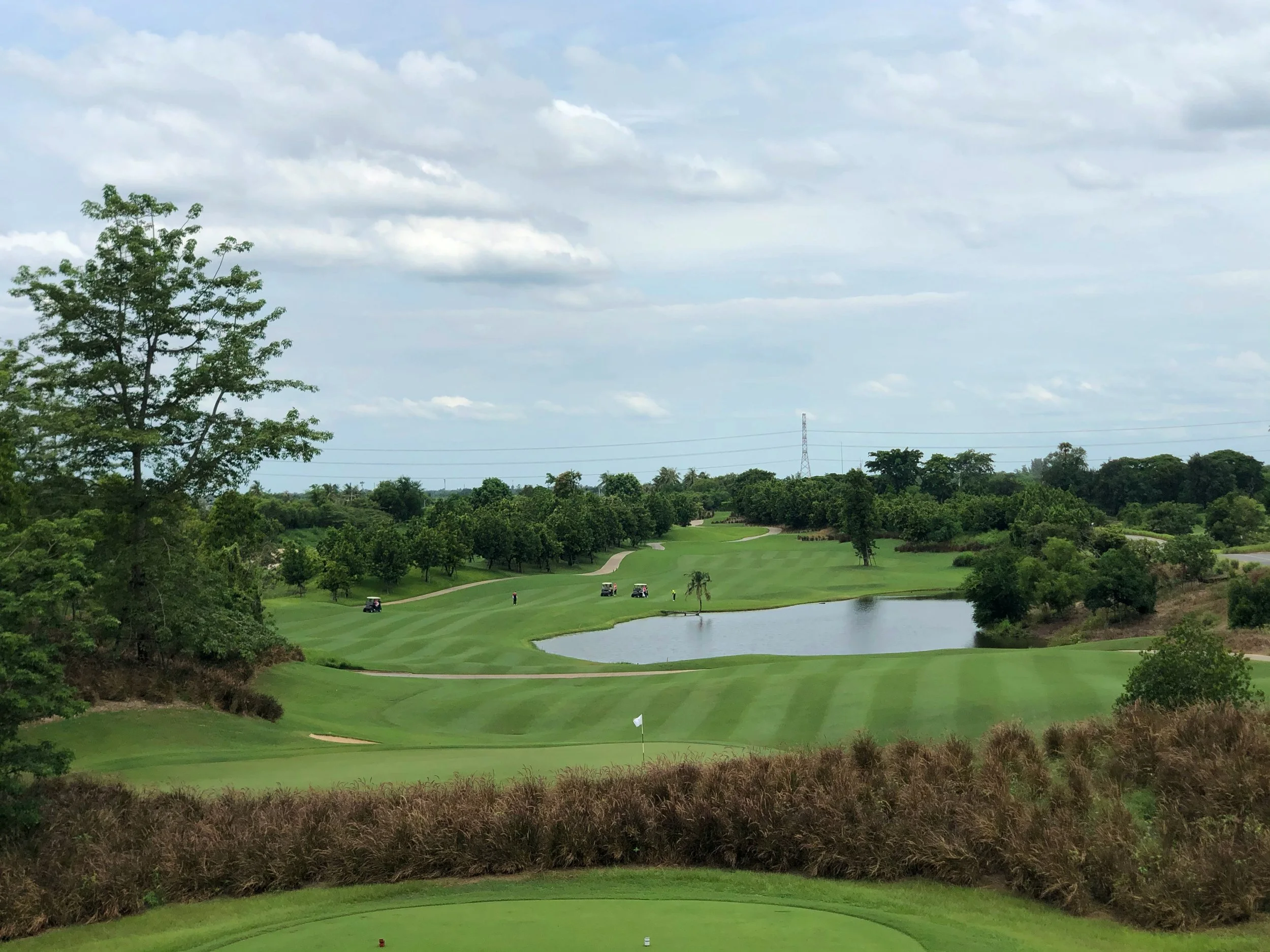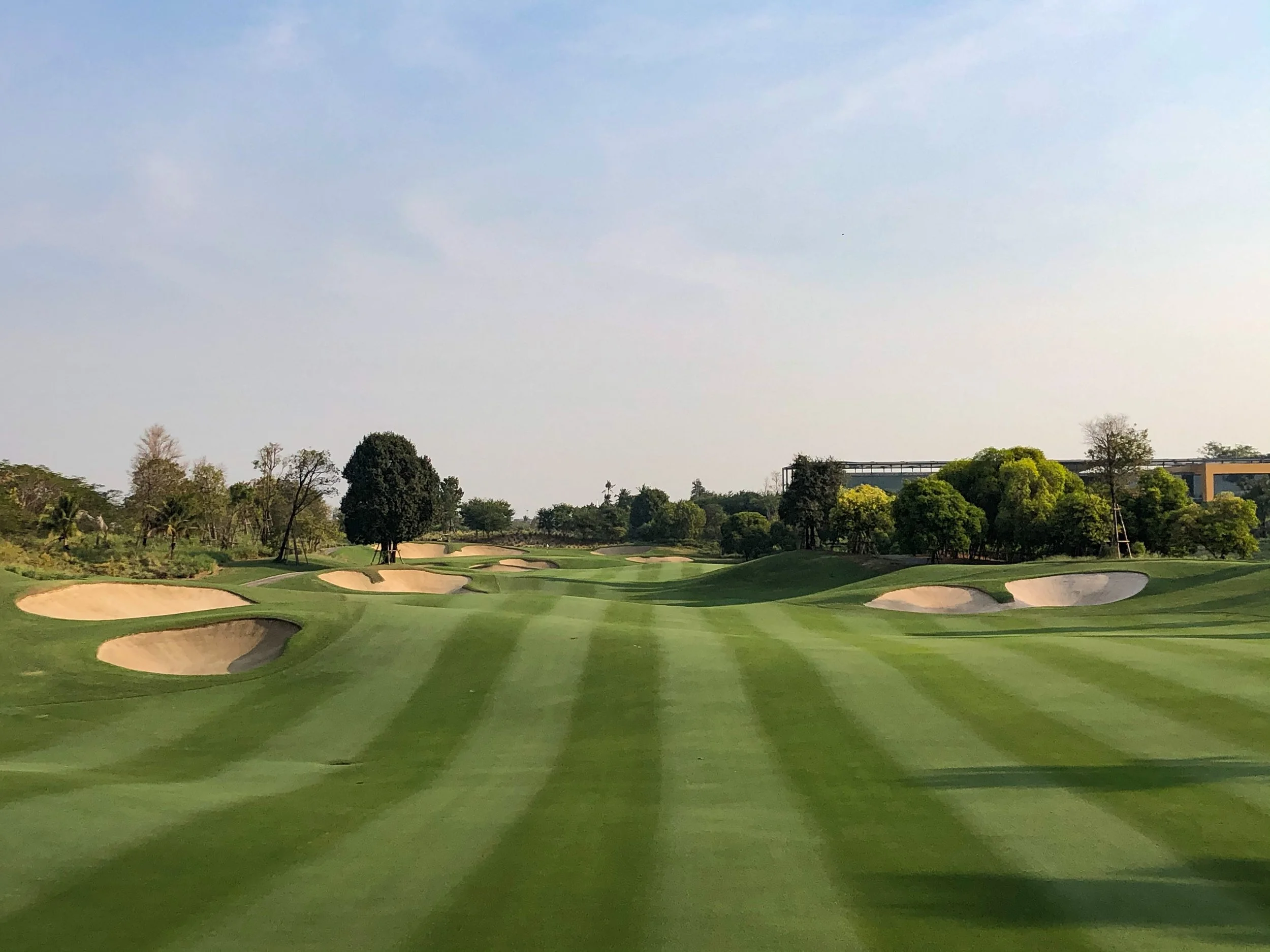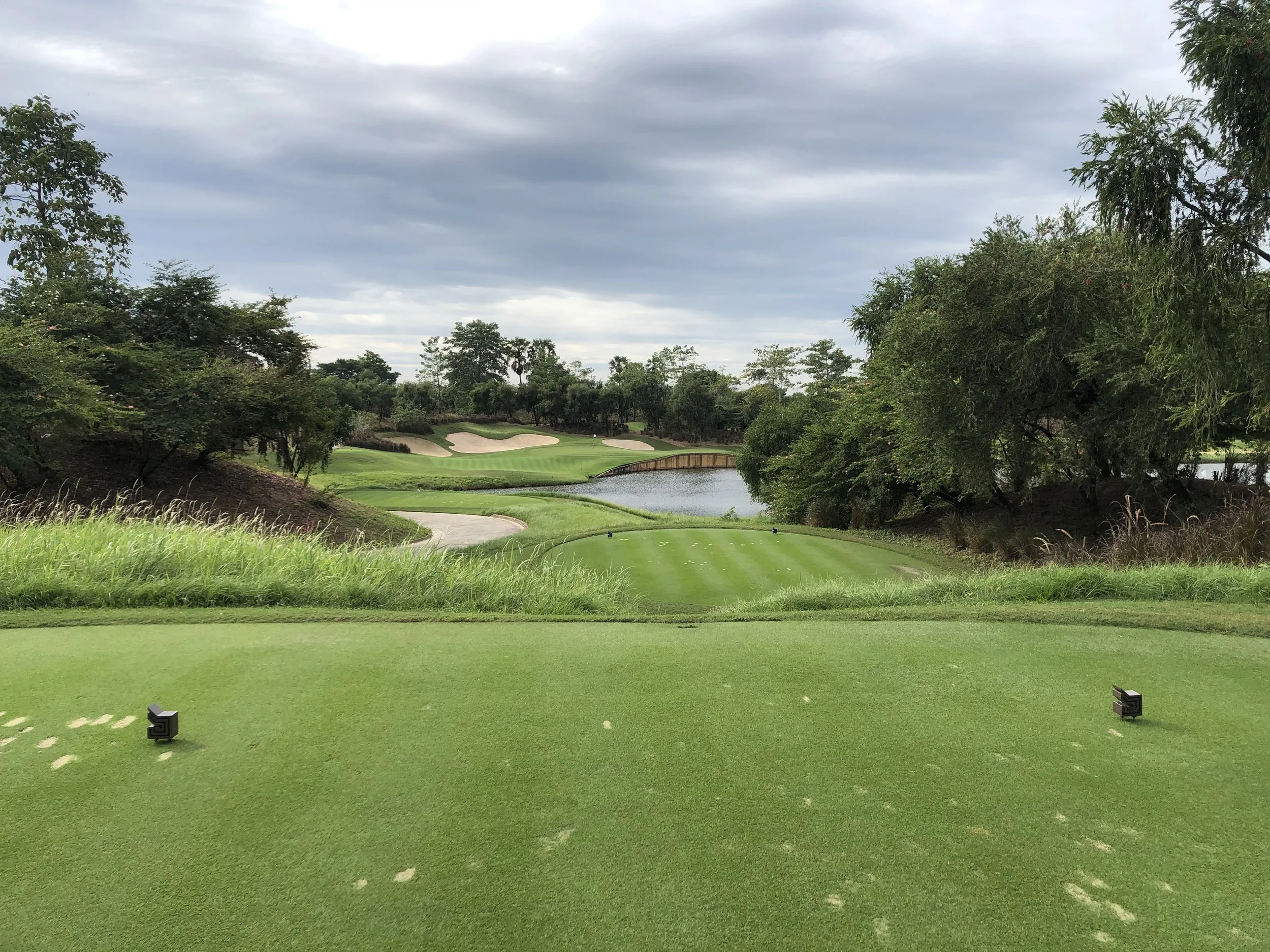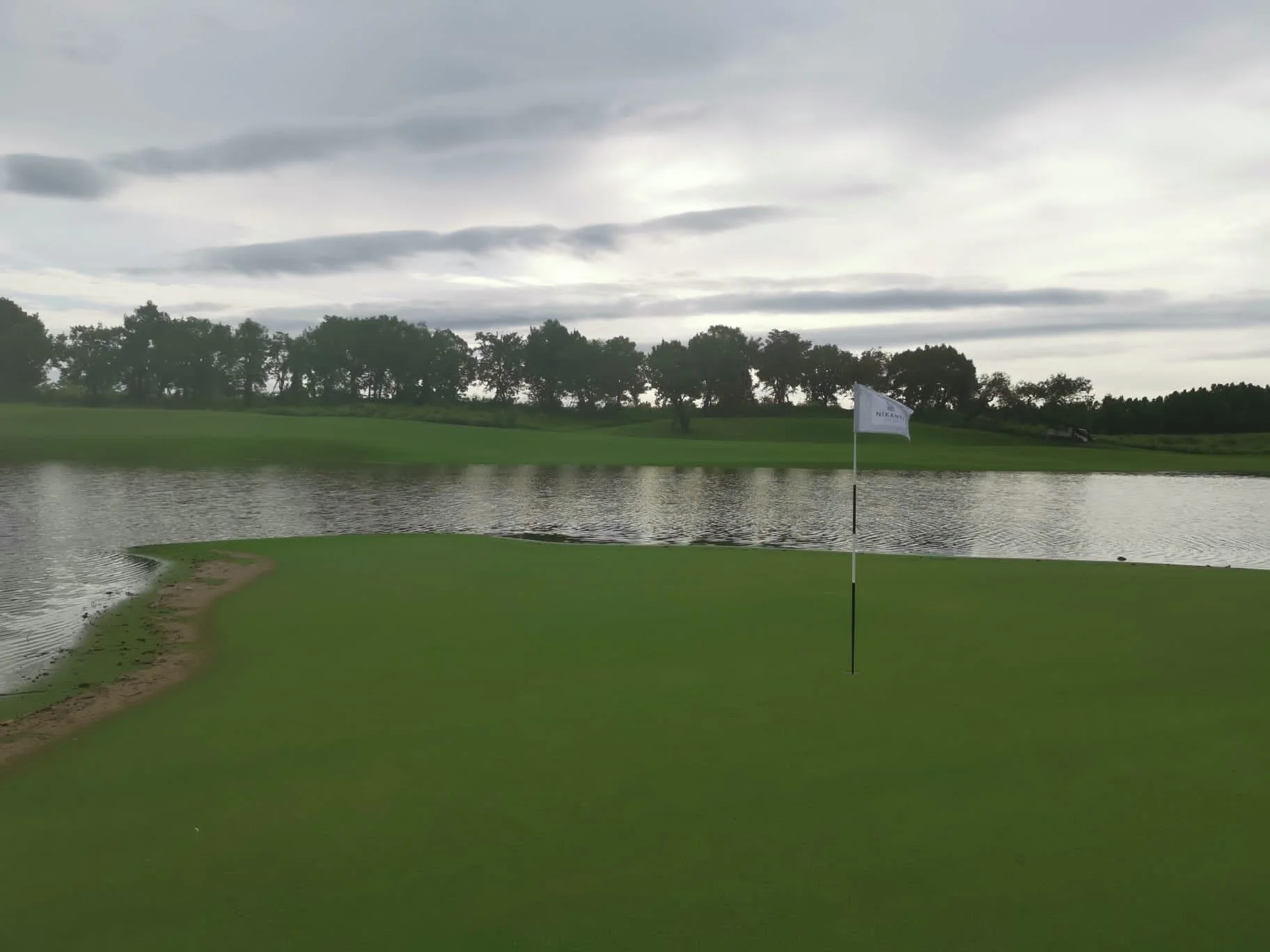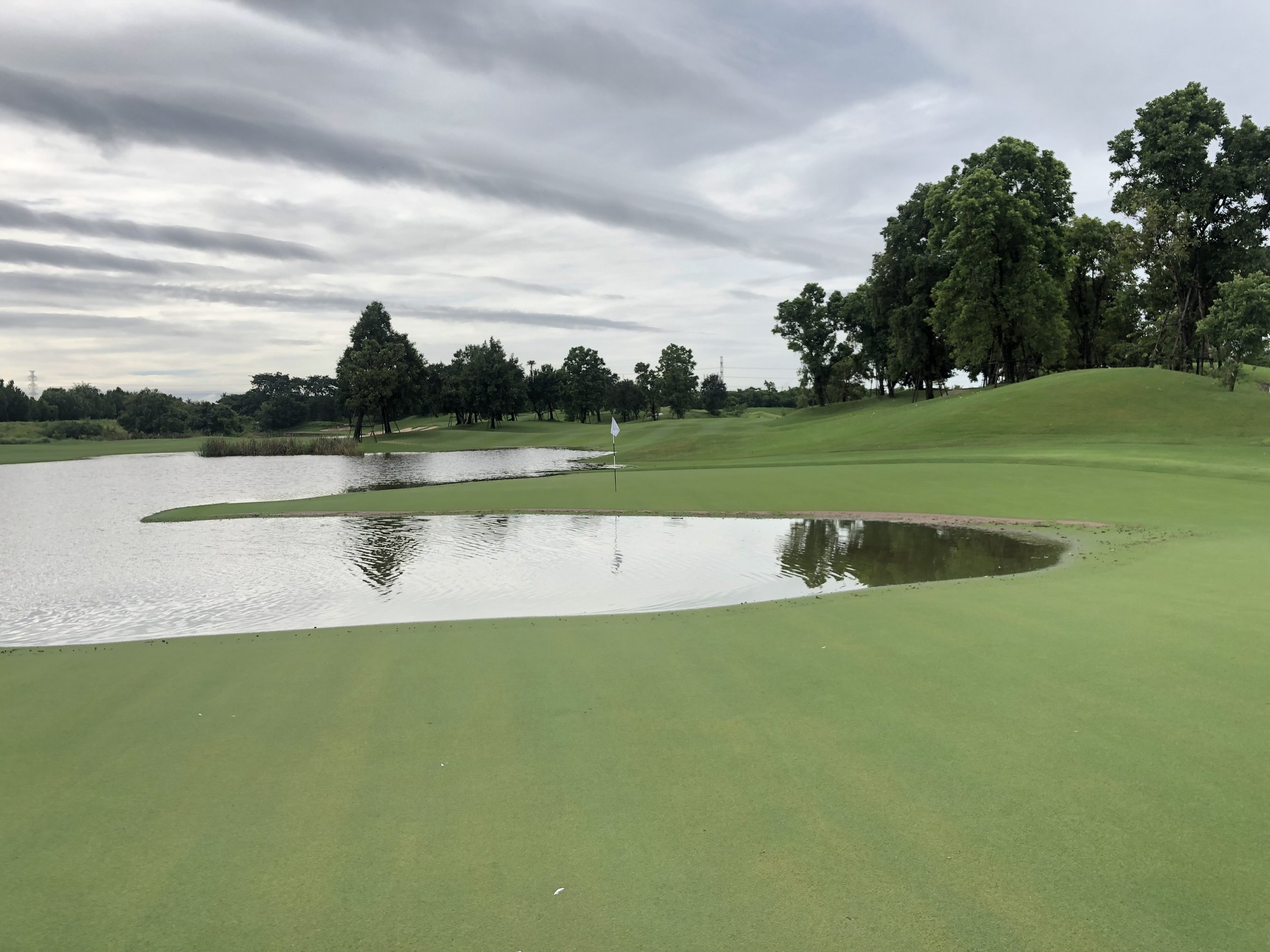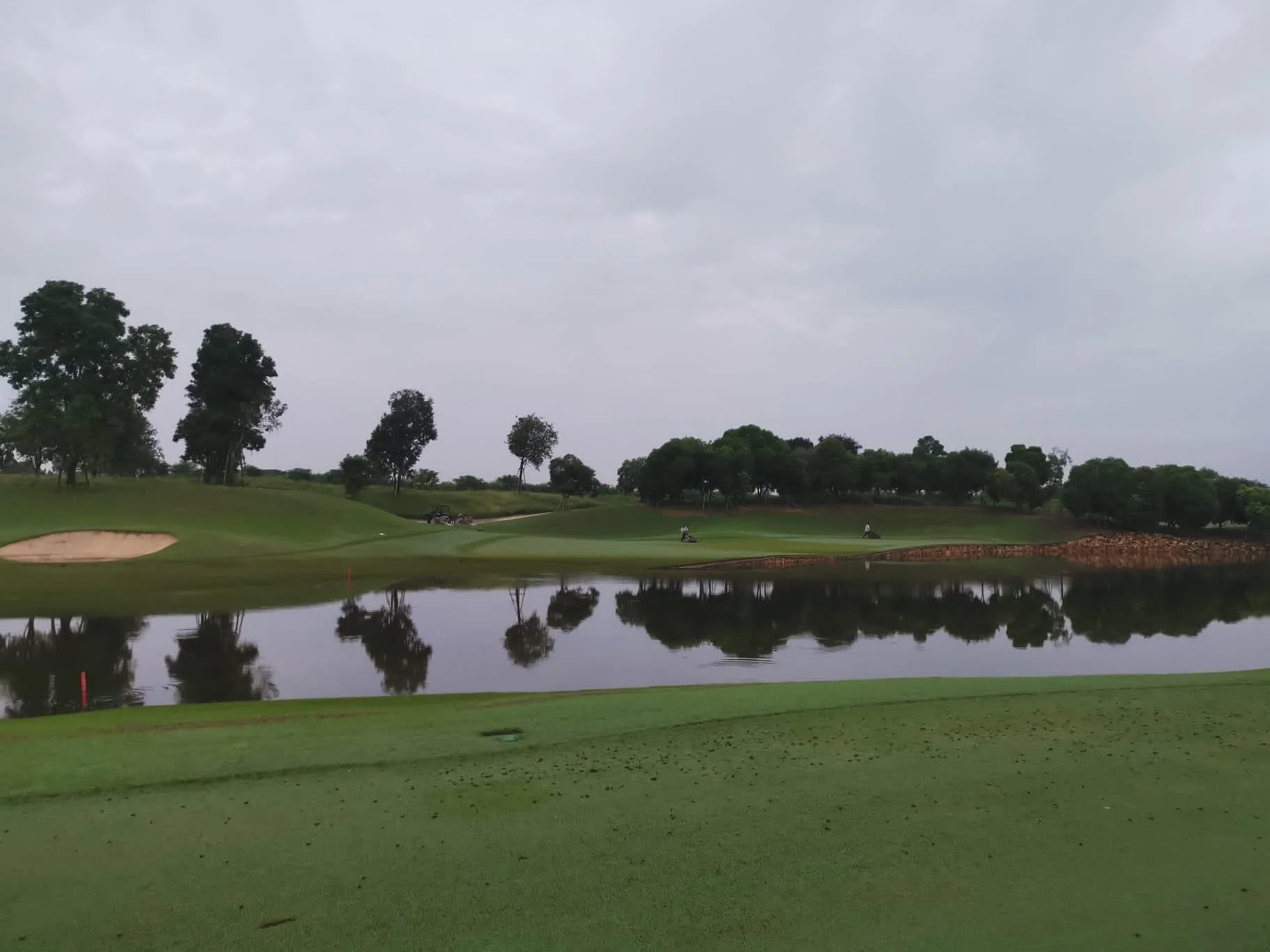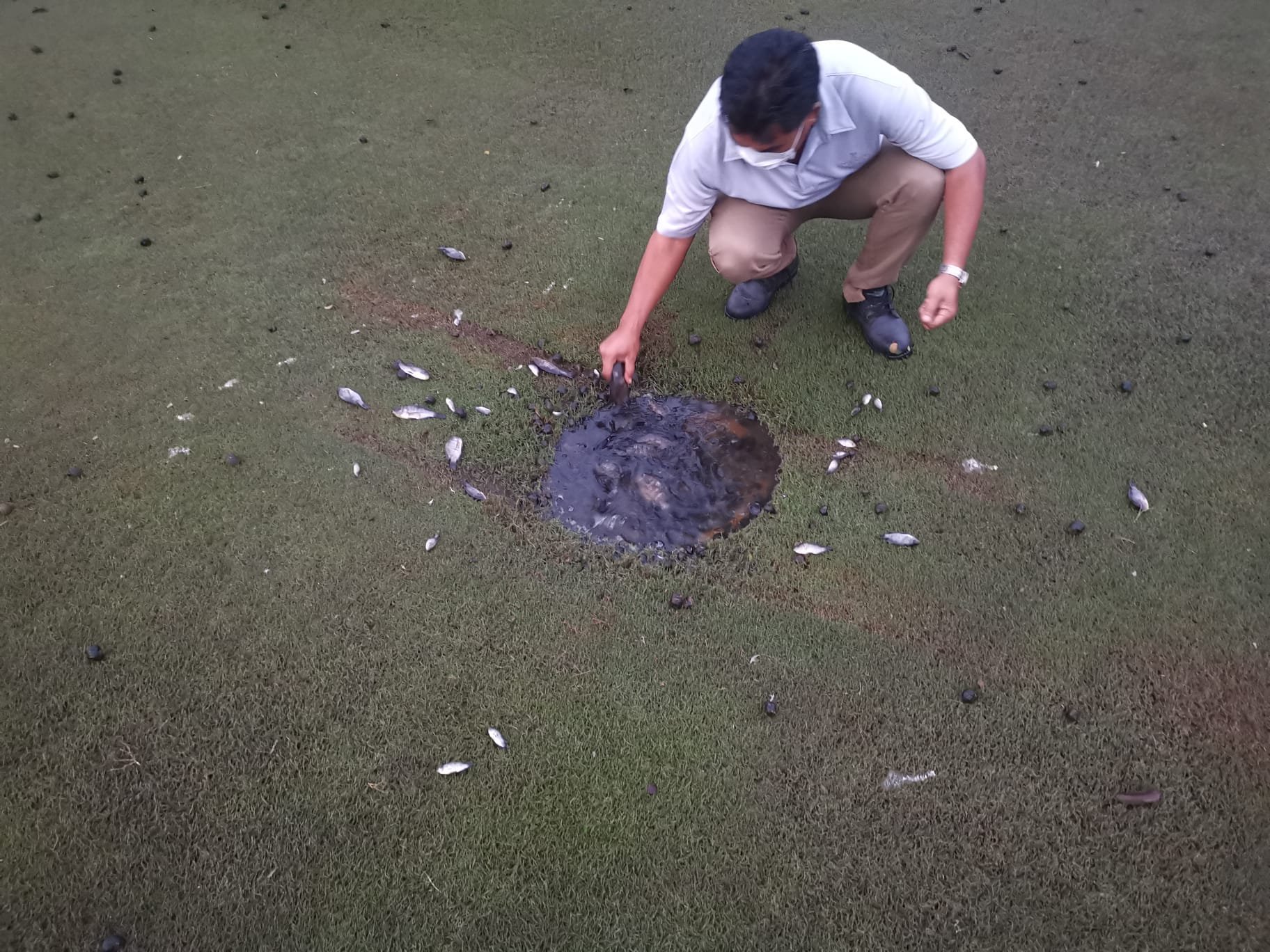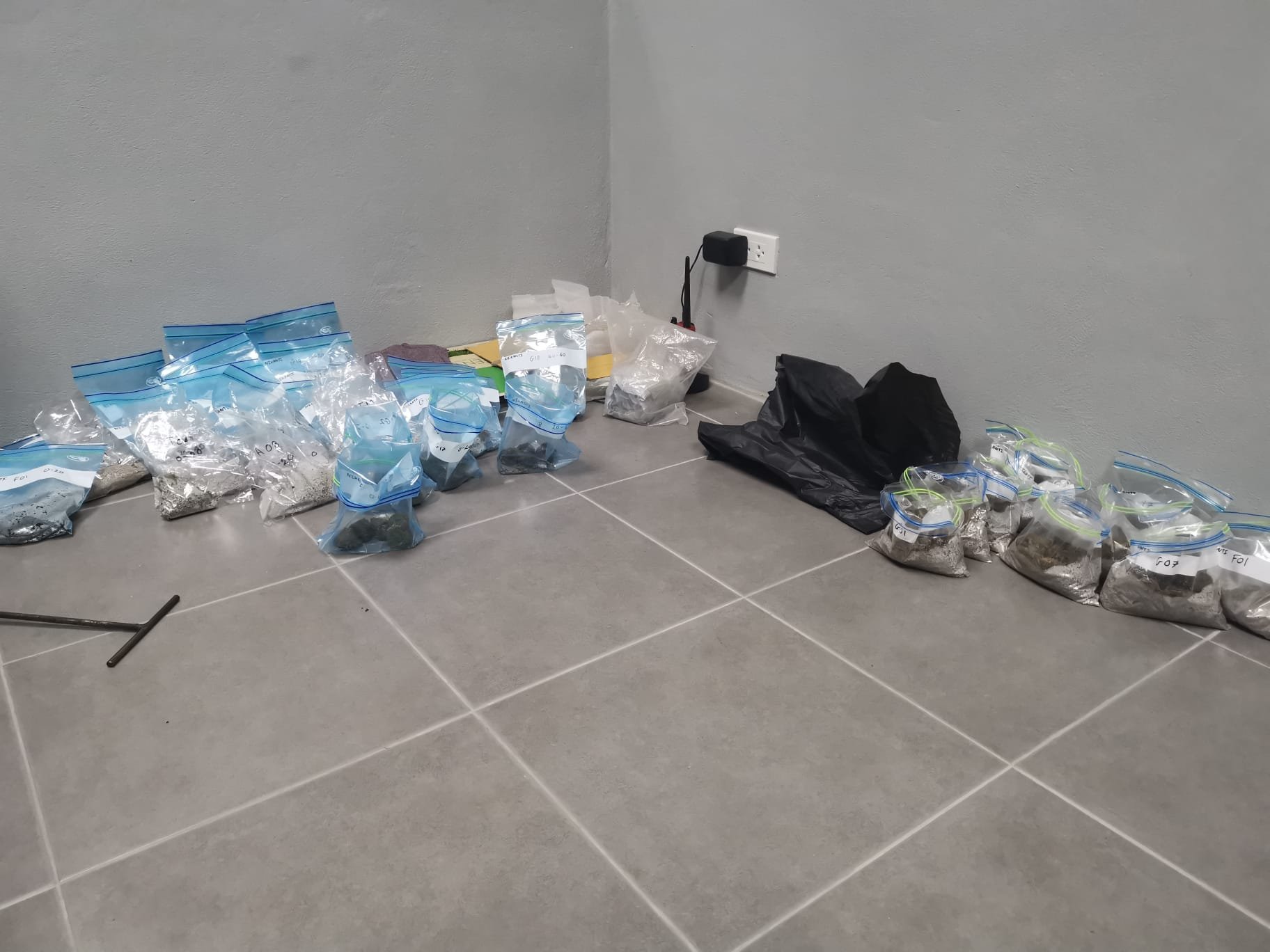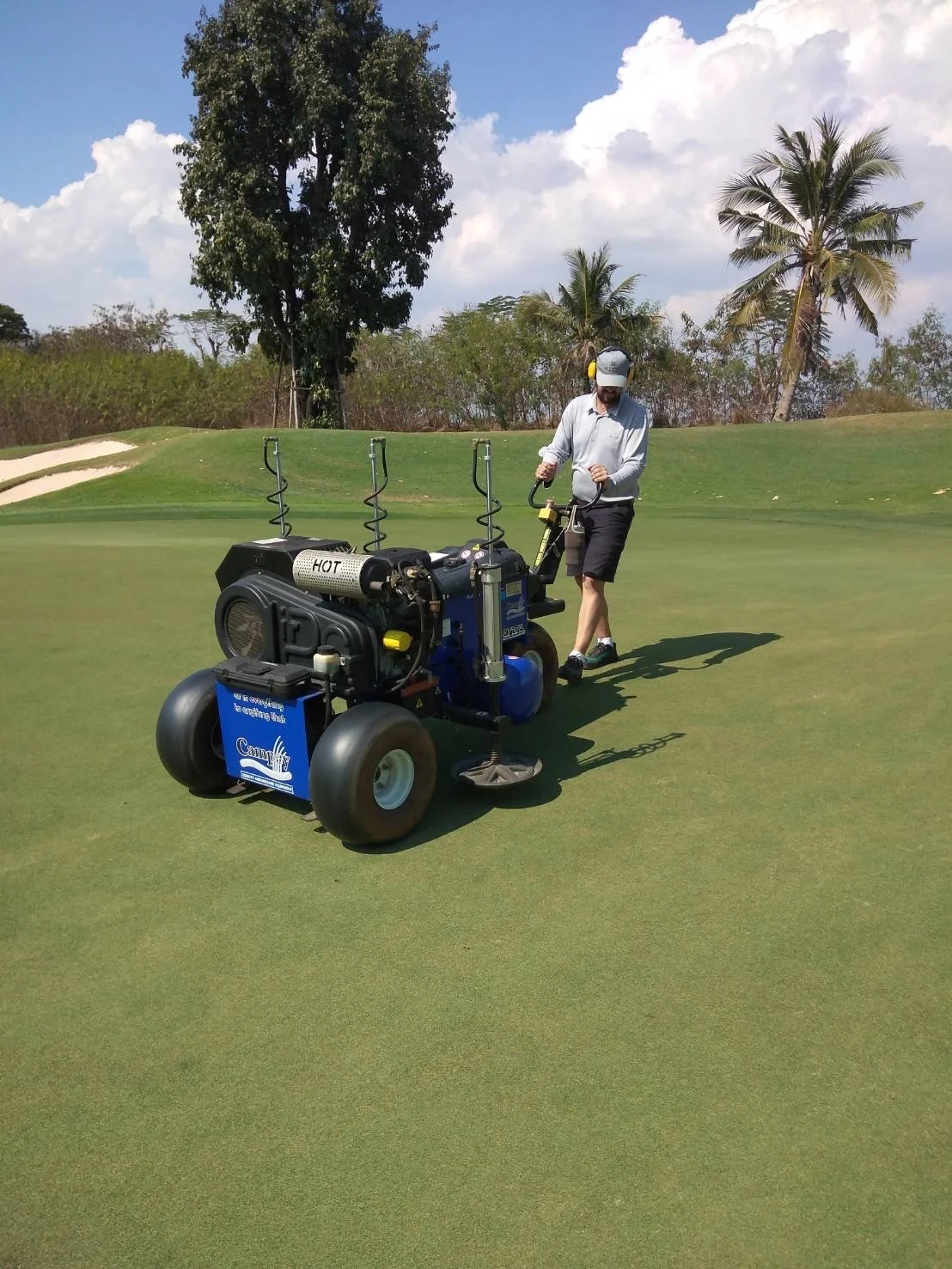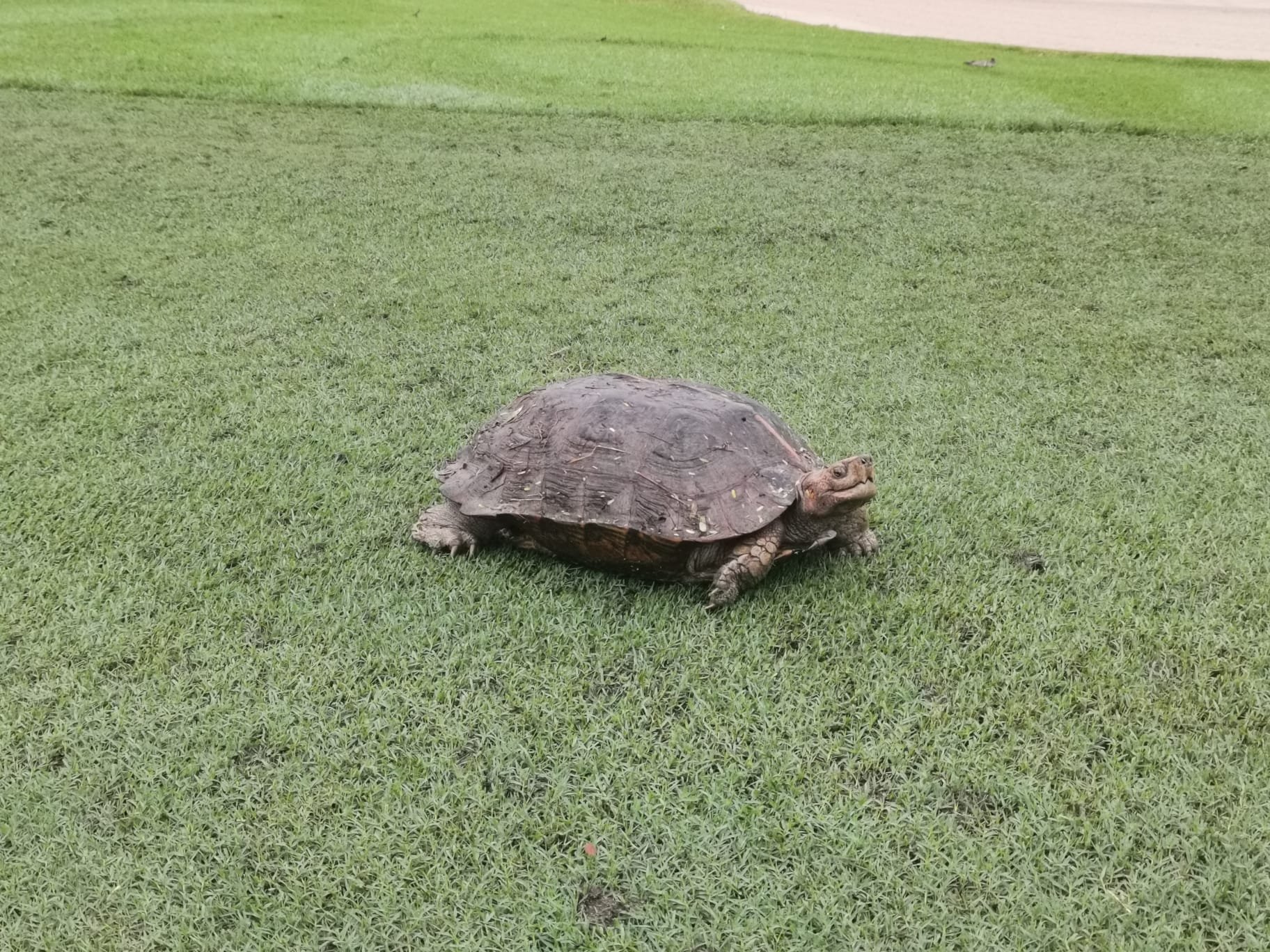Coming to Grips with Data and Macaam-Pom Berries at Nikanti Golf Club - by Richard Last
This guest post was written by Richard Last after his internship at Nikanti Golf Club.
Pictured from left to right: Khun Ten, Khun Noo, Khun Joy, Khun Eak, Richard, Khun Toon, Khun Suwan, Khun Joe, Khun Tiam and Donal.
In October of last year, I had the great fortune and pleasure to start a three-and-a-half-month internship at Nikanti. I knew I had the opportunity to spend the Danish off-season abroad and wanted to find the best possible opportunity; one in which I was able to be around the cutting edge of golf course maintenance, and to try to learn from someone not afraid to experiment and use all the information available to us as greenkeepers. I’m always interested in the old maxim of ‘working smarter, not harder’, especially where this can translate into saving on energy and inputs, and Brad’s wealth of varied experience and outside-the-box thinking, in addition to his clear passion for improvements within the profession and generosity in sharing his accumulated knowledge meant that I was extremely pleased to hear back from him and was really excited to have the opportunity to see his data-driven management techniques and approaches up close, in addition to seeing exactly how a course very different from my own was run.
It was an interesting time to arrive – the rains were supposed to have ended but nevertheless persisted for the first couple of weeks. I was greeted with a flooded course, with water levels well up above their normal height. Due to the low-lying, flat nature of the surrounding geography, all water courses were full, leaving nowhere for the water to be pumped. However, the effect of this water was very mild compared to the other key feature of the rainy season: that of reduced light. Being a Bermuda course, signs of limited solar radiation were very visible, especially on the greens, where Bermuda Decline (aka Gaeumannomyces aka the same organism behind the dreaded take-all patch) had had a big effect. One of my main tasks was going out in the morning to measure green speed and deciding upon whether a roll is needed to reach the day’s target. This task gave me the opportunity to watch the greens’ progress as we eventually transitioned into the current cooler, dryer season. However, as is ever the case with something as fickle as grass, the good times are always too short; average temperatures soon dropped too low some days, meaning a full recovery was somewhat retarded. However, the good weather came at last, and we were in the enviable position of achieving very good green speeds with only a single cut and no roll, even with a cutting height of 4mm. That height was gradually dropped with aim of letting the course reach its peak by the beginning of February, when the BMW cup came to Nikanti. Although I was sad to miss the cup, being around the team during the build-up was a great insight into the type of things prioritized before such a tournament, and it was great to see the grass transition over this short period. Overall, it was an eye-opening look into warm-season turfgrass management.
One of the main differences between the course where I normally work and Nikanti is staff numbers. Whilst my course in Denmark is well-staffed by Scandinavian standards, there are approximately six times as many people working on the course in Nikanti, with each working around 12 hours more a week. I was aware before coming that this was the case and had assumed that it meant getting approximately six times as much work done. However, this isn’t entirely the case; the one benefit I hadn’t considered was the flexibility such numbers allow the team, and this is especially true when it comes to avoiding play. At home, we try to be as considerate as possible to golfers (most of whom are members) by avoiding groups of holes where play is stacked, shutting of our engines when possible and generally giving a wide berth. However, at Nikanti the courtesy shown golfers (all of whom are paying guests) is on a different level and means that someone out on a machine can often wait for longer periods of time in a discreet spot, letting play pass. Thus, having more staff allows for holes to be filled quickly and for jobs to be done at a different pace. Further more, as the whole course is sand-capped – and thus nutrition better controlled – less time is spent cutting. Where we might cut roughs and fairways at least every other day at home, where the fairways and roughs are on heavier, rich soil, here they are only done one time a week (although here it stays like this year- round, whereby we have a relatively shorter growing season!) A bigger team also allows for more attention to be paid to landscaping and detail around the course; the razor-sharp cart path edges and topiary flanking the entrance reflect the attention to detail paid to the quality of the course in general.
Although my Thai language skills leave a lot to be desired, there were many other ways to I was able to bond with my new colleagues. One memory that stands out is being offered a seed that grows on one of the trees in the newly-cut high rough area we were raking up, which I was later told is used as a thirst quencher. It was probably the sourest thing I’ve ever put in my mouth, and my subsequent facial expression caused a five-minute stoppage in work for the laughter to subside! It’s amazing what food can do when all other communication is limited.
I’d like to thank Brad, Dónal and the whole team at Nikanti – not least Khun Ping and Khun Aek, who put up with me on a day-to-day basis for three and a half months - for the fantastic experience and for looking after me as they did. I learned not only a great deal about data-driven approaches to course management - especially in approaching nutrition, irrigation and organic matter management – but about the little things that goes into keeping a wonderful course such as Nikanti in fantastic condition.
Thanks to Richard for writing this post. If you wish to get in contact with him, you can do so via LinkedIn through the link below.


